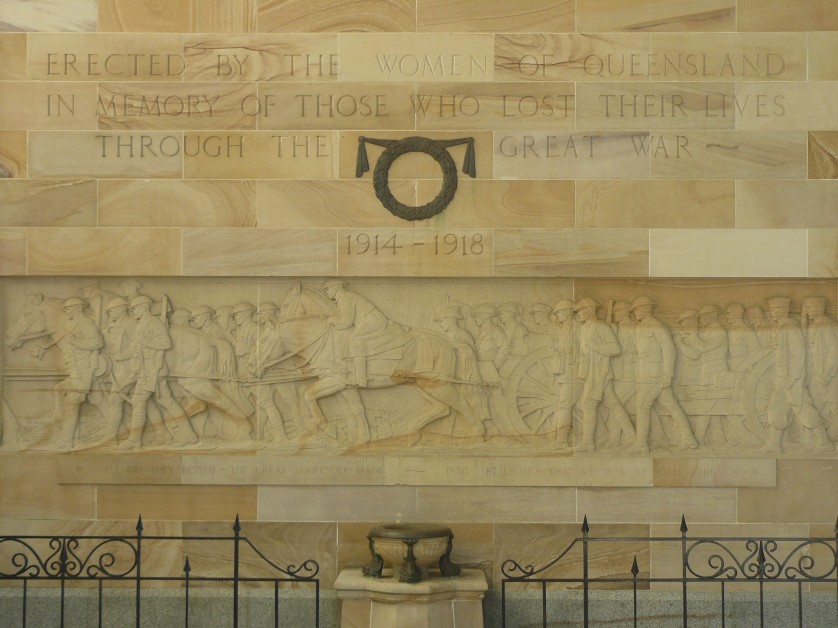You’ll see Australia’s greatest sculptor represented in every major city in the country, in public collections, museums, libraries, and city squares. But in only one of those works is the piece of her heart that prevented her from being stolen by the world. Daphne Mayo was an artist and also one of the nation’s utmost art advocates. She died in 1982 aged 86.
You’ve seen her work at the State Library of New South Wales in Sydney , it’s those the magnificent sculptured doors befitting the world’s most significant collection of Australian and Pacific indigenous culture. There’s the war memorial at The King’s School in Parramatta, and a bust of Field Marshal Sir Thomas Blamey at the Australian War Memorial in Canberra. The National Gallery of Victoria in Melbourne displays her outstanding torso of an Olympic athlete.
In her home state of Queensland, Brisbane’s City Hall boasts a clock tower modelled on St Mark’s Basilica in Venice, the facade on the British Museum, and adorning the area above is Daphne Mayo’s superb relief of early settlement. This is still the most important Brisbane sculpture commission ever awarded.
Go to Brisbane’s Tattersalls Club if you can, because it’s for men only, and ironically you see Daphne’s gorgeous decorative frieze representing the horse in sport. Travel to outback Queensland and you’ll appreciate the apt “The Jolly Swagman” statue in Winton.
Her last commissioned public work was the commanding memorial to Major General Sir William Glasgow in Brisbane’s Post Office Square, which now enjoys a direct line of sight to the commemoration to his men in Anzac Square. This was her least favourite statue because it was ordered after the general’s death, meaning she never got to know the man.
Daphne won the gold medal at the Royal Academy of Arts in London, and in the post-First World War period travelled Europe with fellow student Lloyd Rees to whom she was engaged. Daphne’s stellar career trajectory meant she was planning to stay abroad, but a family tragedy in 1924 brought her home, and shortly thereafter she ended her engagement. She never married. Rees became one of Australia’s most notable landscape artists.
Her private life spilled into what must be her most moving works, the Queensland Women’s War Memorial in Anzac Square in Brisbane. This was the first war memorial depicting servicewomen. Gaze deep into the face of the man foremost in the gun detail. He is straight-backed and resolute. His head is more upright than the others, he looks more determined, alive. Somehow you might even guess at fair complexion, fair hair, blue eyes, and you’d be right. You see, his name is Captain Richard Mayo, Daphne’s brother. He died in 1924 of war-related illness. It was his death that brought Daphne home, and kept so many of her wonderful works here for us to love.


Goo stuff Harold. I regret my ignorance of her work.
LikeLike
Thanks John. Daphne Mayo’s work is magnificent. I am sure now that you know her name, you will see and read about it everywhere.
LikeLike
👍👍
Sent from my iPhone
>
LikeLike
Susie I hope you now notice more of her brilliant work now that you’ve heard her name
LikeLike
[…] Click here to read about sculptor Daphne Mayo. […]
LikeLike
Great readingg your blog post
LikeLike